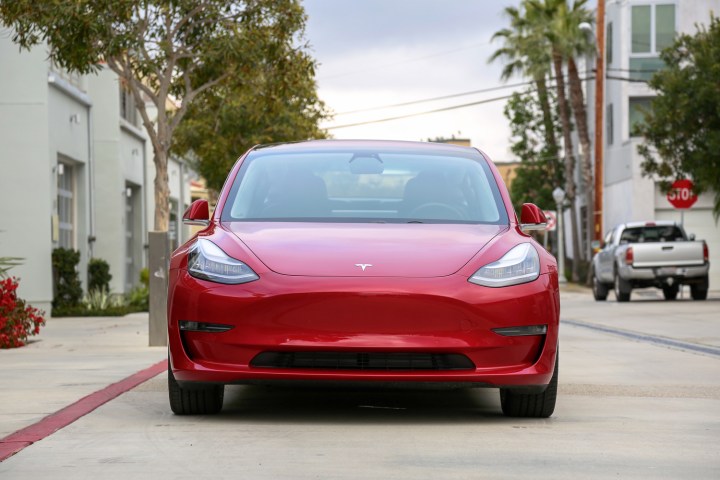
Tesla pledged its entry-level Model 3 sedan would cost $35,000 before federal incentives, but every example it has delivered to date has sold for at least $54,000. The company is keeping its promise of making the car more affordable over time by releasing a new variant of it priced under the $50,000 mark.
Tesla co-founder and CEO Elon Musk made the announcement on his personal Twitter account — where else? He posted a link to the Model 3’s ordering page, which includes the new model with the midrange battery pack. The specifications sheet lists rear-wheel drive (instead of dual-motor all-wheel drive) and up to 260 miles of driving range according to estimations made by the Environmental Protection Agency (EPA). It takes 5.6 seconds to reach 60 mph from a stop and maxes out at 125 mph.
To put those figures into context, the range-topping Model 3 Performance boasts 310 mile of range and a 3.3-second zero-to-60-mph time thanks to a dual-motor, all-wheel drive configuration. Buyers who select the cheaper option will need to charge more often, but the 260-mile rating places the Model 3 ahead of the Chevrolet Bolt and the more expensive Jaguar I-Pace, which the EPA rates at 238 and 220 miles, respectively.
Musk addressed concerns potential buyers raised about driving a rear-wheel drive car in the colder parts of the country. He said Tesla’s rear-wheel drive cars work well on snow and ice because the company did its traction testing on a frozen lake. “Dual-motor all-wheel drive is great but not required for cold weather,” he explained. “Just don’t use sport/summer tires.”
Pricing for the Model 3 with the midrange battery pack starts at $45,000. Tesla notes customers are eligible for the full $7,500 federal tax credit if they take delivery by the end of 2018. The company also points out buyers need to wait between six and 10 weeks for delivery. 10 weeks from the day of the announcement corresponds to December 26, 2018, so customers who want to benefit from the full credit need to place an order quickly. Customers who take delivery between January 1 and June 30, 2019, will only get $3,750 from the government, according to the company.
The Model 3 will keep getting more affordable. Tesla’s ordering guide states the standard battery pack — which presumably corresponds to the $35,000 base price — will be available in four to six months.
Editors' Recommendations
- The Tesla Model Y is at its lowest price yet — but should you buy one?
- Cybertruck production reportedly halted over pedal issue
- Tech giant reveals nice price for new EV to take on Tesla
- Here’s how Ford will give EV customers Tesla Supercharger access
- 2024 Chevrolet Equinox EV: price, release date, range, and more




